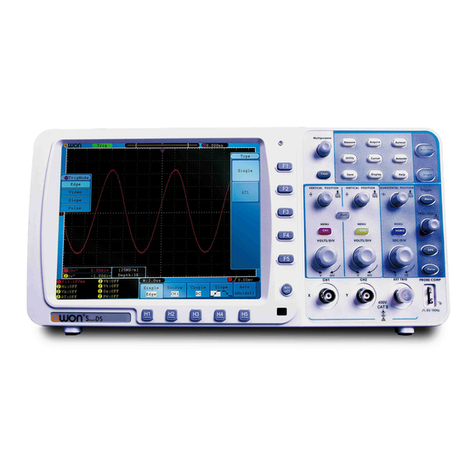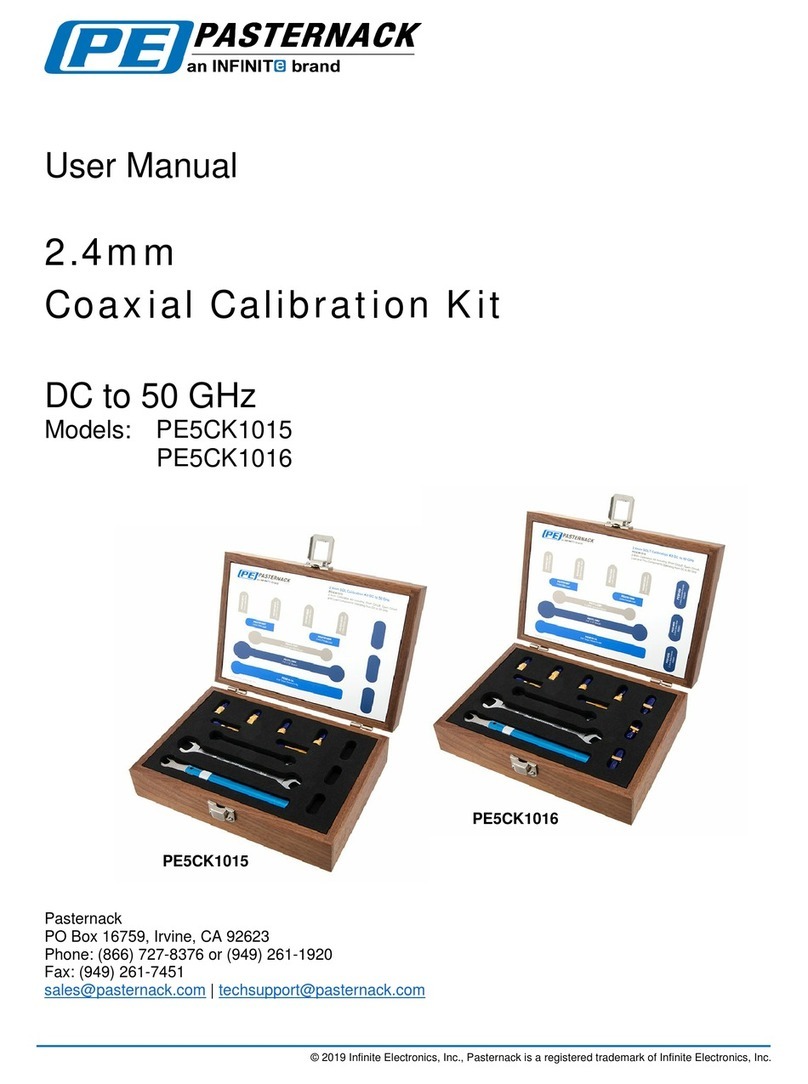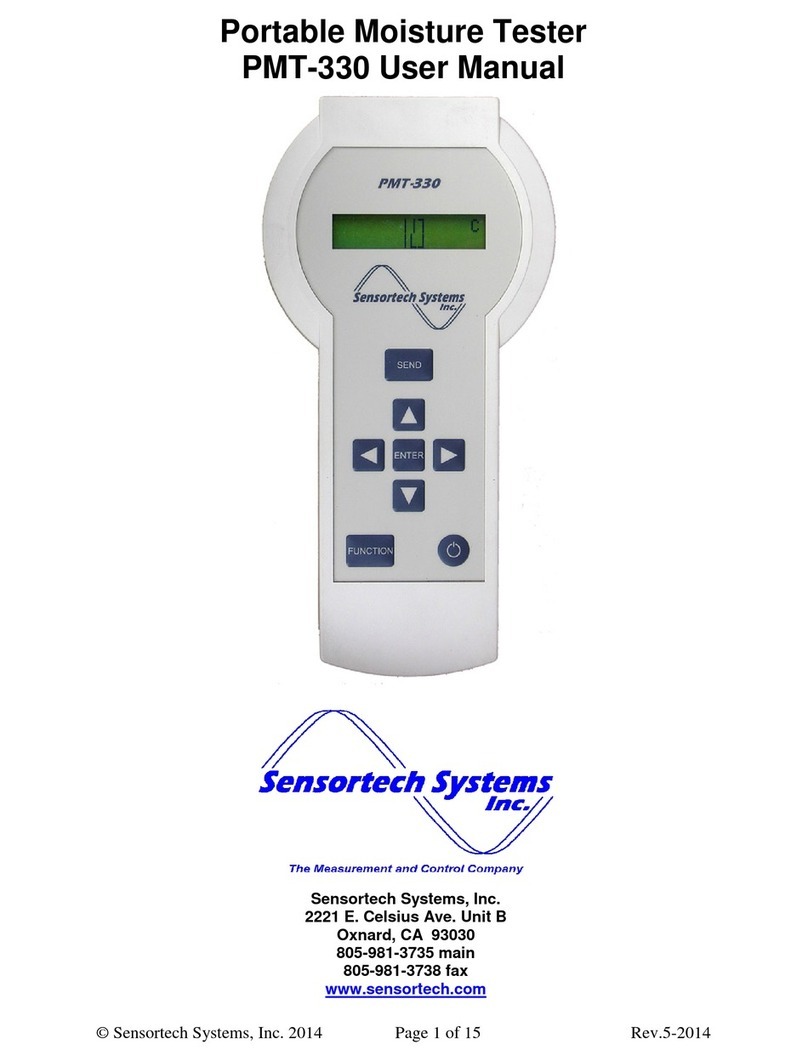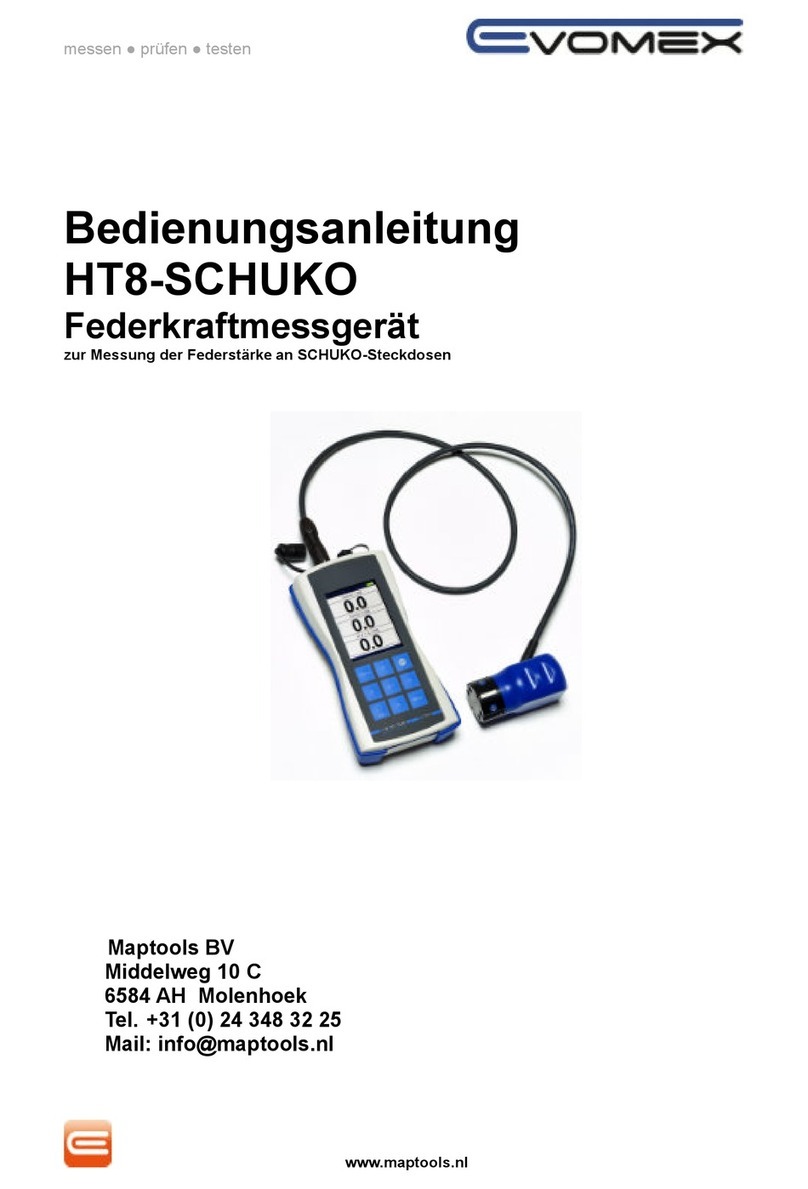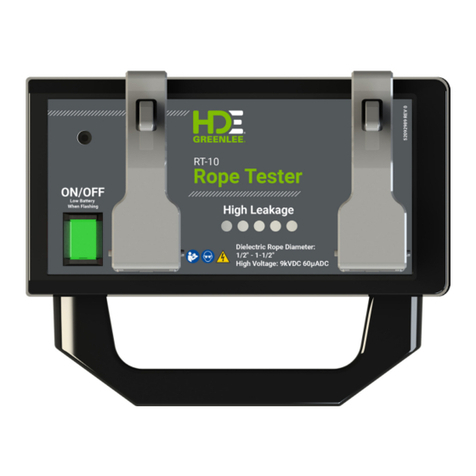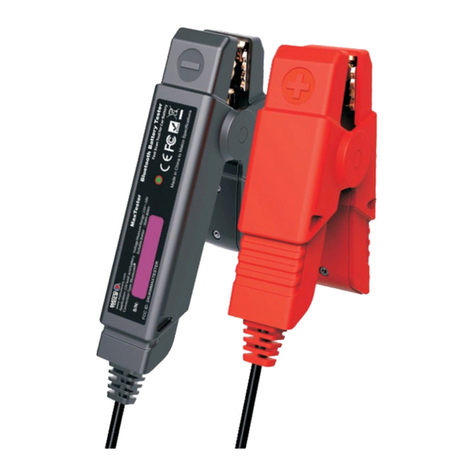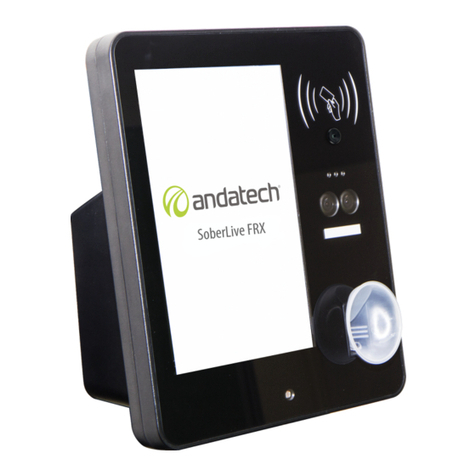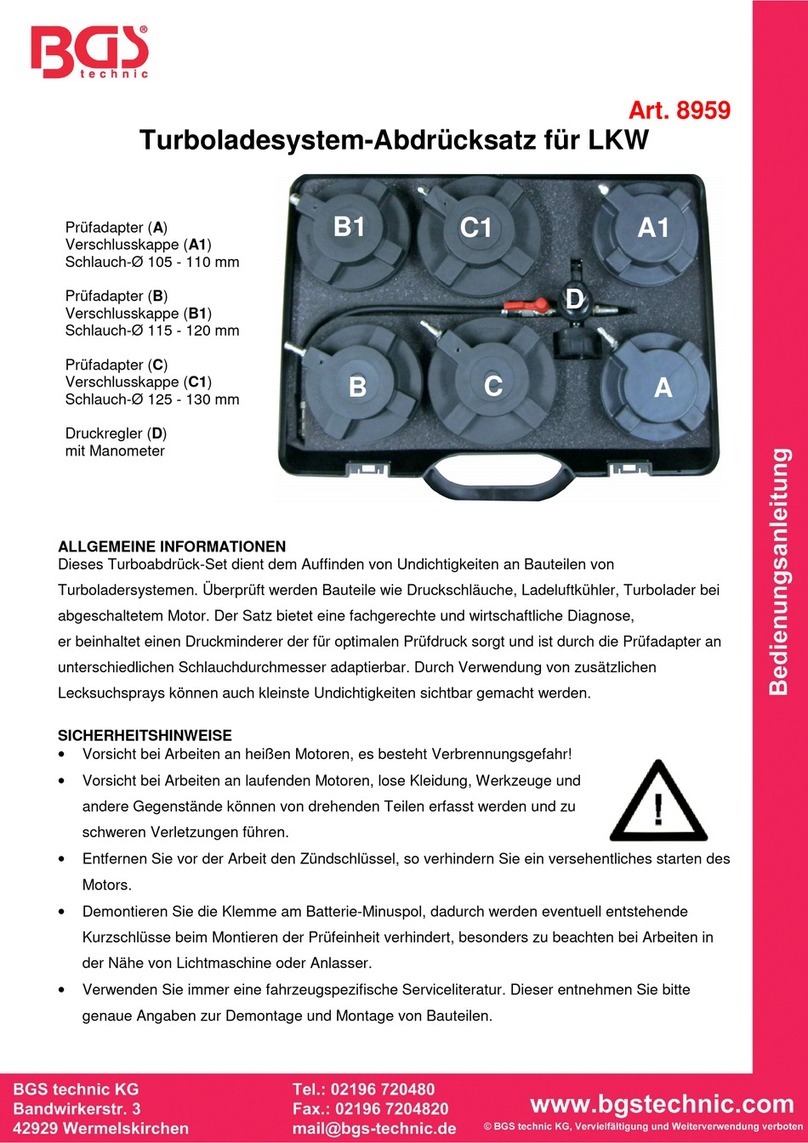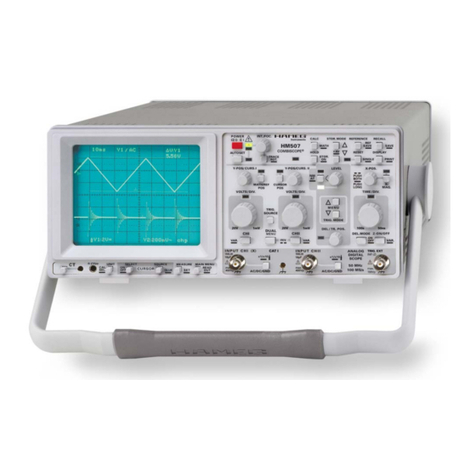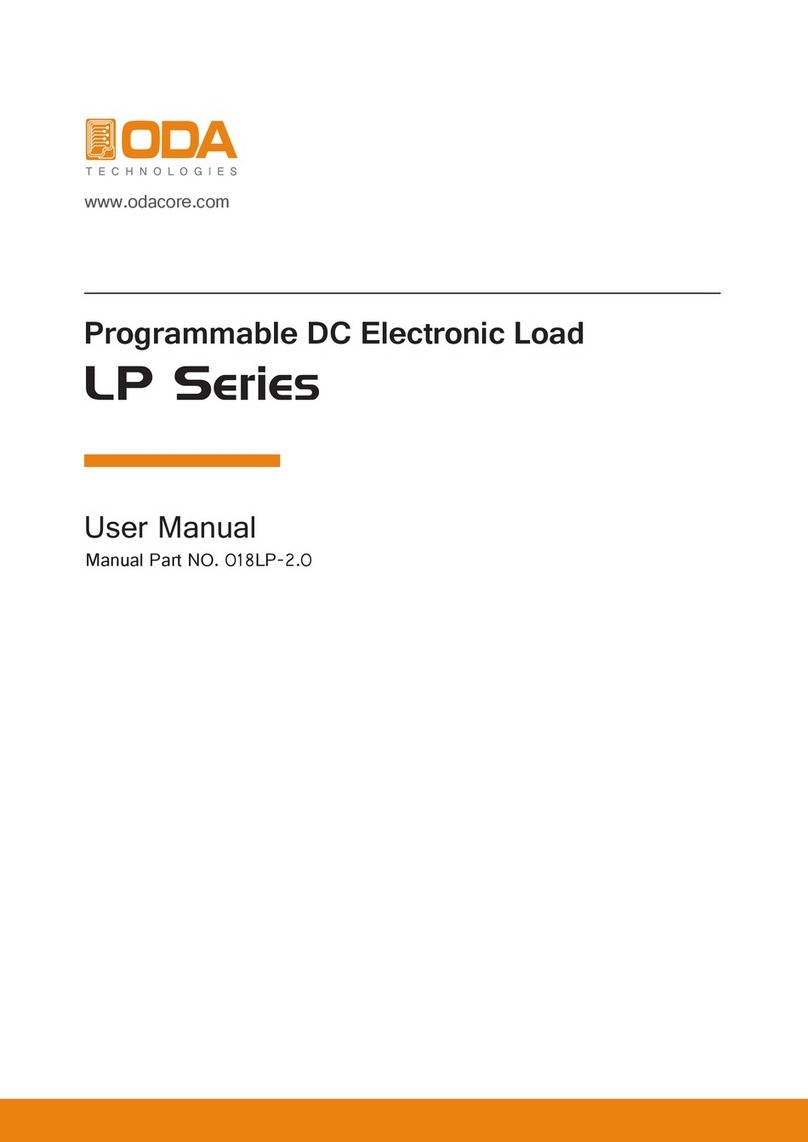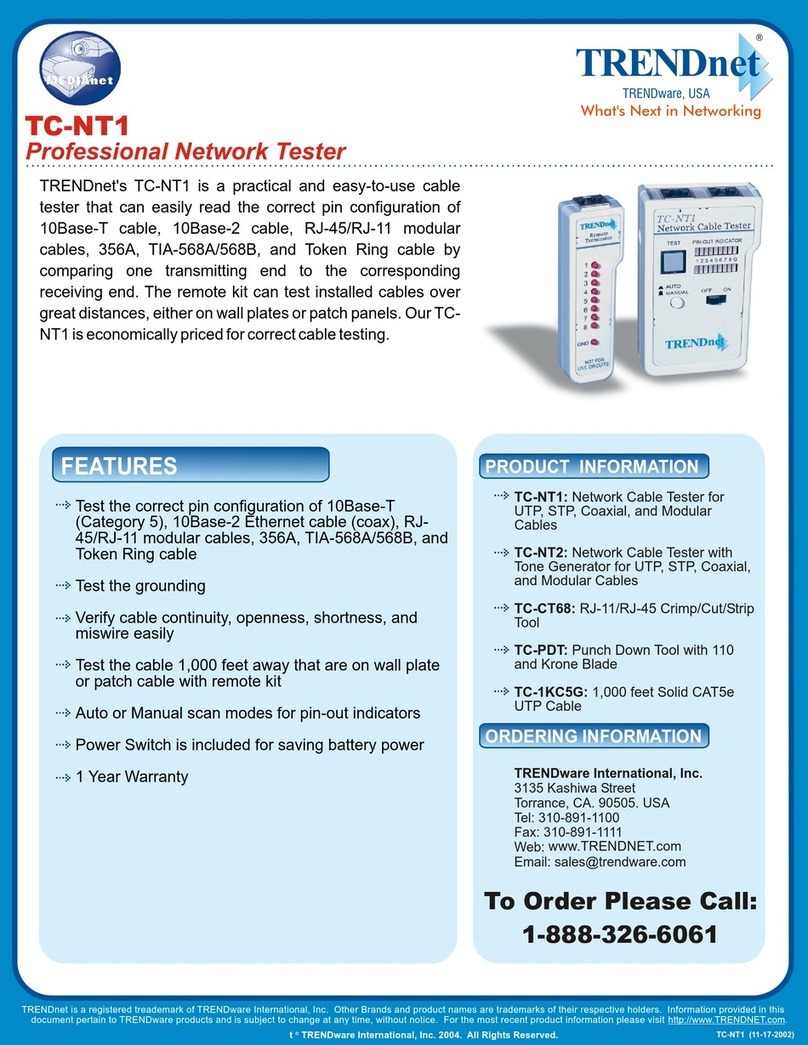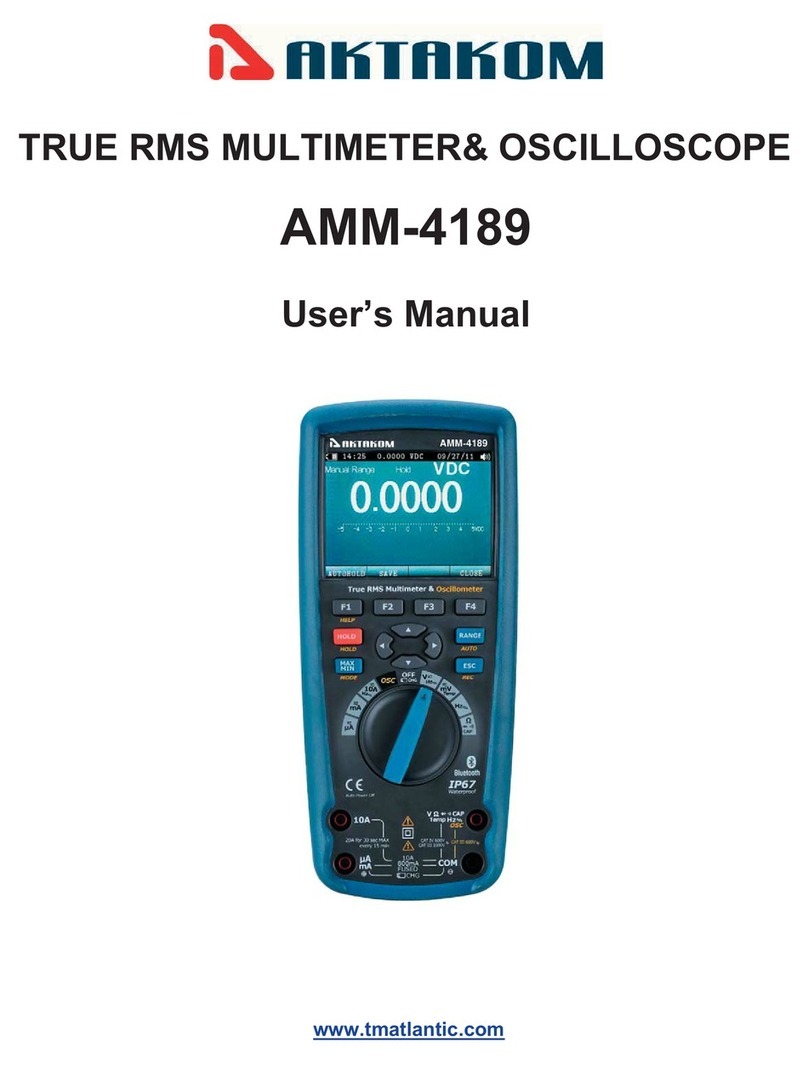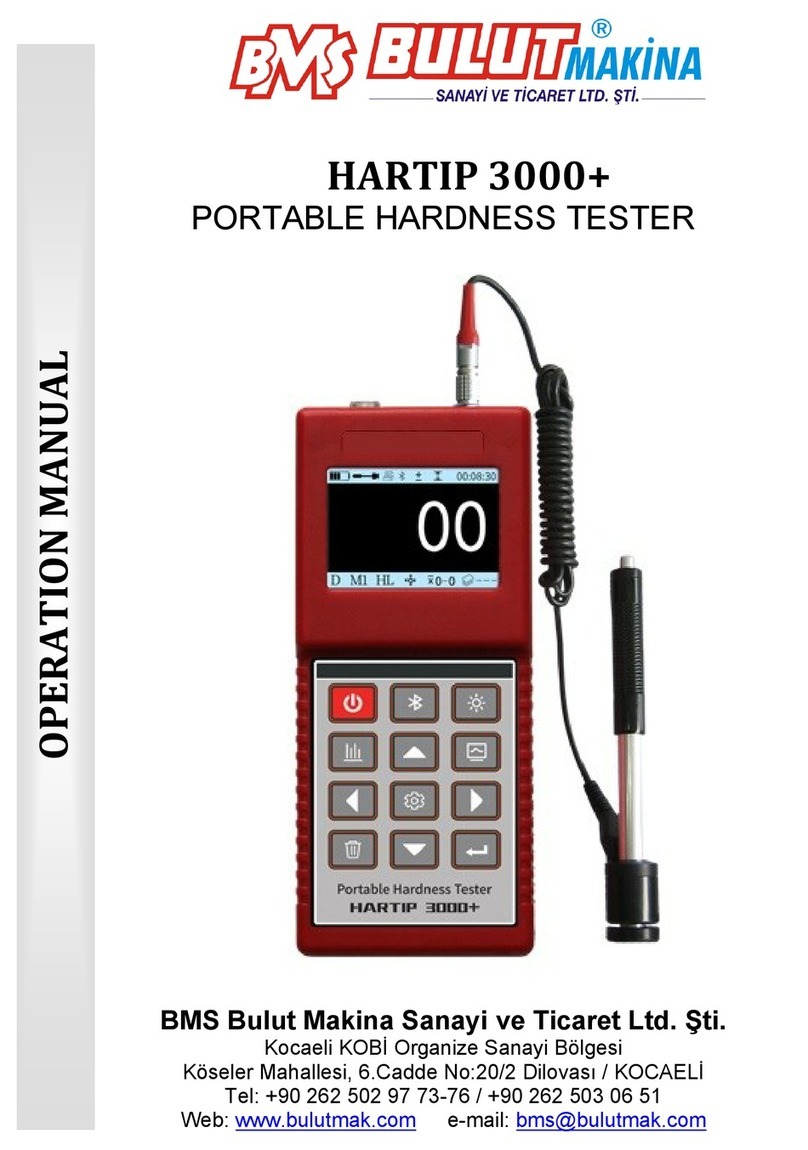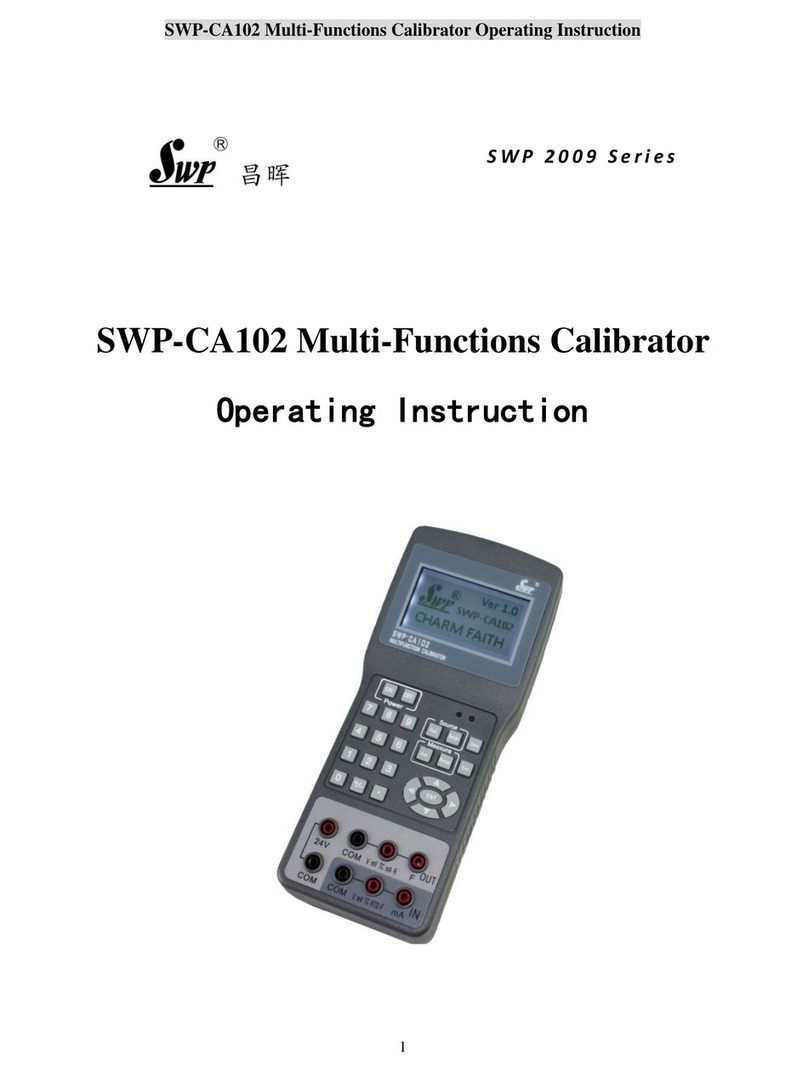DeFelsko PosiTector UTG User manual

Full Guide v. 3.1
Ultrasonic Thickness Gage

Table of Contents
Table of Contents
Introduction ......................................................... 1
Quick Start .......................................................... 1
Certification ......................................................... 3
Probes ................................................................. 4
How to Measure .................................................. 6
Surface Conditions .............................................. 7
Calibration, Verification and Adjustment ............. 8
Menu Operation .................................................. 9
Cal Settings Menu ............................................... 10
Zero ................................................................ 10
Thickness ....................................................... 11
Material .......................................................... 11
Velocity .......................................................... 11
2 Pt Adjust ..................................................... 12
Cal Lock ......................................................... 12
Cal Reset ....................................................... 12
Setup Menu ......................................................... 13
Reset .............................................................. 13
Min Scan ........................................................ 14
A Scan ............................................................ 14
B Scan ........................................................... 15
SE Mode ........................................................ 16
Smart CoupleTM .............................................. 17
Statistics Mode ............................................... 19
Memory Management .................................... 20
Annotate ......................................................... 23
Summaries ..................................................... 25
Screen Capture .............................................. 25

Accessing Stored Measurement Data ................ 26
PosiSoft.net ................................................... 26
PosiSoft Desktop............................................ 26
PosiTector App .............................................. 26
Connect Menu ..................................................... 27
WiFi......... ....................................................... 27
Access Point................................................... 27
USB.......... ...................................................... 29
USB Serial Streaming..................................... 29
Sync.net Now.................................................. 30
Bluetooth Smart................ ............................. 30
Bluetooth......................................................... 31
Updates .......................................................... 32
Application Notes ................................................ 33
Measuring on pipes ....................................... 33
Measuring on rough surfaces ........................ 33
Measuring on hot surfaces ............................ 34
Measuring laminated materials ...................... 34
Troubleshooting - eneral................................... 35
age fails to power down............................... 35
Probe measures when lifted from surface...... 35
age is coupled but not measuring................ 35
age readings double expected thickness 35
Measurement jumps when probe is lifted 35
Troubleshooting - Multiple Echo (M) probes........ 37
Power Supply / Battery Indicator ........................ 39
Technical Data .................................................... 40
Probe Details & Specifications........................ 40
Operating Temperature Range....................... 40
Size / Weight.................................................. 40
Returning For Service ......................................... 41
Warranty .............................................................. 41

1
Introduction
Introduction
The PsiTect r UTG is a hand-held Ultrasonic Thickness age
that uses the non-destructive ultrasonic pulse-echo principle to
measure the wall thickness of a wide variety of materials. It
consists of a body (Standard or Advanced) and probe (UTG C or
UTG M, see pg. 4).
The PosiTector UTG powers-up when the center navigation
button is pressed. To preserve battery life, the instrument
powers down after approximately 5 minutes of no activity. All
settings are retained.
1. Remove the protective rubber cap from the probe.
2. Power-up age by pressing the center navigation button.
3. Zero the probe (see pg. 10)
4. Select the correct velocity of sound (see pg. 11)
5. Measure the part (see pg. 6)
Quick Start
Quick Start
PosiTector UTG Kit Contents
- PosiTector body (Standard or Advanced)
- PosiTector probe (UTG C or UTG M)
- Protective rubber cap for Probe
- Protective lens shield
- Wrist strap
- 3 AAA alkaline batteries
- Quick uide instruction booklet
- Protective rubber holster
- Nylon carrying case with shoulder strap
- Belt clip for rubber holster and carrying case
- USB Cable
- 4 ounce (118 ml) bottle ultrasonic couplant
- Certificate of Calibration traceable to NIST
- PosiSoft.net account
- Two (2) year warranty on Body and Probe

2
Wrist Strap
We recommend attaching and wearing the
supplied wrist strap.
1
2
Protective Lens Shield
The LCD is covered with a thin plastic film for protection against
fingerprints and other marks during shipment. This film, while
usually removed before using the instrument, can be left in place
to protect against paint overspray or debris. Replacements can be
purchased.
Protective Cap
PosiTector UTG gages ship with a protective plastic cap over the
probe. Remove this cap prior to use. Replace it when the
instrument is not in use to protect the probe.
USB Port
LCD
Display
Zero Block
Probe
Connector
PosiTector Body
UTG C probe
UTG M probe
5 MHz Dual Element
5 MHz Contact

3
Certification
All PosiTector UTG probes include a Certificate of Calibration. For
organizations with re-certification requirements, instruments may
be returned at regular intervals for calibration.
DeFelsko recommends that customers establish calibration
intervals based upon their own experience and work environment.
Based on our product knowledge, data and customer feedback, a
one year calibration interval from either the date of calibration, date
of purchase, or date of receipt is a typical starting point.
Typical Display
Current
Measurement
Currently
selected
material
Unit of
Measurement
The Coupled Symbol appears when the
probe is ultrasonically connected with a
surface.
inch
Steel
Battery
Icon
Measurement
Mode currently set
to multiple-echo
(UTG M probe only)
Factory Calibration
settings in use.

4
To disconnect a probe from a body, power-down the
instrument and slide the plastic probe connector
horizontally (in the direction of the arrow) away from the
body. Reverse these steps to attach a new probe.
When powered-up, the PosiTectorautomatically
determines what type of probe is attached and does a
self-check.
Probes
Probes
PosiTector UTG probes transmit an ultrasonic pulse into the
material to be measured. This pulse travels through the material
towards the other side. When it encounters an interface such as air
(back wall) or another material, the pulse is reflected back to the
probe. The time required for the pulse to propogate through the
material is measured by the age, represented as t1and t2 below.
PosiTector UTG C and UTG M (in single-echo mode) probes
determine thickness by measuring t1(uncoated) or t2 (coated),
dividing it by two and then multiplying by the velocity of sound for
that material (steel). See Figure 1.
steel
coating
steel
2
t>1
t
Figure 1
2
t
1
t
Probe
Probe
For uncoated materials t1relates directly to material thickness.
When a material is coated the propagation time is increased and
is shown above as t2.
Coatings such as paint have a slower velocity of sound than that
of metal. Thus the single-echo technique will produce a thickness
result greater than the actual combined coating+metal thickness.
Ultrasonic Thickness Probes - Theory of peration

5
The PosiTector UTG M in multiple-echo mode determines
thickness by measuring the time between at least three
consecutive back wall echoes.
steel
Probe
1
t2
t3
t
1
t2
t3
t
Coating
Figure 2
Probe
In the figure above, multiple-echo mode measures only the time
between echoes. Regardless of whether the steel is coated or not,
all times between echoes are the same. In multiple-echo mode,
the age determines thickness by measuring t1+t2+t3, dividing it
by six and then multiplying by the velocity of sound for that
material. The resultant thickness calculation made by the
instrument is therefore an accurate measurement of the steel
thickness only, disregarding the coating thickness.
The velocity of sound is expressed in inches per microsecond or
meters per second. It is different for all materials. For example,
sound travels through steel faster (~0.233 in/µs) than it travels
through plastic (~0.086 in/µs).
Additional PosiTector Probes:
The PosiTector body accepts a wide variety of probe types
including magnetic, eddy current and ultrasonic coating thickness,
surface profile,environmental, Shore hardness durometer, salt
contamination and ultrasonic wall thickness probes. See
www.defelsko.com/probes

6
How to Measure
How to Measure
1. Remove rubber cap from probe. Couplant
(glycol gel - included) must be applied to the
surface to be tested to eliminate air gaps
between the wear face and the surface. A
single drop of couplant is sufficient when
taking a spot measurement.
2. Place the probe flat on the surface. Use moderate pressure to
press against the top of the probe with the thumb or index finger.
When the probe senses echoed ultrasound, a coupled symbol
will appear on the display and thickness values will be
displayed. While the probe is coupled, the PosiTector UTG
continually updates the display.
3. When the probe is removed from the surface, the last
measurement will remain on the display.
Occasionally, excess couplant will remain on the probe when the
probe is lifted from the surface. This may cause the PosiTector
UTG to display a final measurement value different from those
observed when the probe was on the surface. Discard this value
and repeat the measurement.
PosiTector bodies accept all PosiTector DPM, 6000, 200, SPG,
RTR, SST, SHD and UTG probes

7
Surface Conditions
Surface Conditions
Ultrasonic measurements are affected by the condition,
roughness and contour of the surface to be tested.
Measurement results may vary on coarse surfaces. Where
possible, it is recommended to seat the transducer on a smooth
flat surface that is parallel to the opposite side of the material.
On rough surfaces, the use of a generous amount of couplant
minimizes the surface effects and serves to protect the transducer
from wear, particularly when dragging the probe across a surface.
During scanning operations, the probe can be become physically
decoupled, that is physically separated, from the material, either
due to the rough and/or scaly surface of the material or due to
user operation. Avoid this by using the Smart CoupleTM feature
(pg. 17)
On smooth, uncoated metal surfaces the age
(in multiple-echo mode) may occasionally be unable to give a
measurement result even when the "coupled" symbol
appears. Use additional couplant and lighter pressure on the
probe when measuring. Alternatively, laying a plastic shim on the
surface with couplant applied to both sides to simulate a painted
surface will help produce a steel-only thickness measurement
(multiple-echo mode). Switching the age to single-echo SE
mode (pg. 16) will also help produce a steel-only thickness
measurement.
UT M Probes:

8
Calibration, Verification and Adjustment
Calibration, Verification and Adjustment
Three steps ensure best accuracy…
1.Calibration - typically done by the manufacturer or a qualified
lab. All probes include a Certificate of Calibration
2.Verification of Accuracy - as done by the user on known
reference standards such as calibration step blocks.
3.Adjustment - to a known thickness or sound velocity for the
material to be measured
Calibration
Calibration is the controlled and documented process of
measuring traceable calibration standards and verifying that the
results are within the stated accuracy of the age. Calibrations
are typically performed by the age manufacturer or by a certified
calibration laboratory in a controlled environment using a
documented process. The standards used in the calibration are
such that the combined uncertainties of the resultant
measurement are less than the stated accuracy of the age.
Written Calibration Procedures are available online at no charge
http://www.defelsko.com/downloads.htm
Verification
age accuracy can and should be verified using known reference
standards of the material to be tested.
Verification is an accuracy check performed by the user using
known reference standards. A successful verification requires the
age to read within the combined accuracy of the age and the
reference standards.
To guard against measuring with an improperly adjusted age,
verify the age at the beginning and the end of each work shift.
During the work shift, if the age is dropped or suspected of
giving erroneous readings, its accuracy should be re-verified.

9
In the event of physical damage, wear, high usage, or after an
established calibration interval, the age should be returned to the
manufacturer for repair or calibration.
Adjustment
Adjustment, or Calibration Adjustment is the act of aligning the
age's thickness readings to match that of a known reference
sample. See Calibrati n Adjustment pg. 10.
Memory
Statistics
Cal Settings
Setup
Connect
Help
Power Off
Exit
Menu peration
Menu peration
age functions are menu controlled. To access the Menu,
power-up the age, then press the center navigation button.
Below is a sample menu for a PosiTector UTG Advanced Model:
Some buttons have a tick box to their
right to indicate current status. An empty
box indicates that feature is not active.
Current selection is displayed
with darkened background
ü
Sync Now
USB Drive
Auto SYNC
Bluetooth
WiFi
Powder Probes
Updates
Exit
Press the (+) button to switch pages in a
multipage menu.
Press the (-) button to return to the previous
menu or page.
Select Exit to exit from any menu.
To navigate, use the Up and Down buttons to scroll vertically and to SELECT.
Previous Page
(Exit)
Up
Down
Next Page
Access the Menu
(Center/Select)

10
Cal Settings Menu
Cal Settings Menu
The P siTect r UTG is factory calibrated. In order for it to take
accurate thickness measurements of a particular material it must
be set to the correct sound velocity for that material. Be aware that
material composition (and thus its sound velocity) can vary from
stated tables and even between lots from a manufacturer.
Adjustment to a sample of known thickness of the material to be
measured ensures that the age is adjusted as close as possible
to the sound velocity of that specific material. Samples should be
flat, smooth and as thick as the maximum expected thickness of
the piece to be tested.
The P siTect r UTG allows four simple adjustment choices. All
four methods are based on the simple premise of adjusting the
sound velocity. The first three adjustment methods make 1-point
calibration adjustments to optimize the linearity of the P siTect r
UTG over small ranges. The fourth method makes a 2-point
calibration adjustment to allow for greater accuracy over a large
range.
Zero
PosiTector UTG probes can be "zeroed" to compensate for
temperature and wear. This action is not required when operating
in multiple echo mode (UTG M probes only) except when the
instrument is new and after a Reset (pg. 13). However, it ensures
best accuracy when operating in SE (single-echo) mode.
Therefore, it is a good idea to "zero" the probe before each work
shift and when the temperature of the part changes. During
zeroing, it does not matter what the current velocity setting is.
1. Make sure the instrument is on and the probe is wiped clean.
2. Apply a single drop of couplant nt the zer plate located on
the underside of the probe connector. DO NOT apply couplant
directly onto the probe face.
3. Select the Zero menu option and follow the on-screen prompts.
Calibration Adjustment

11
Thickness
The most common method of adjustment is to measure a sample
of known thickness. Select a reference standard of material as
close as possible in composition to the intended application. For
best results, the thickness of the reference standard should be
equal to or slightly greater than the thickness of the part to be
measured.
1. Apply a drop of couplant onto the reference standard.
2. Measure the reference standard.
3. Lift the probe. Select Thickness from the Cal Settings menu.
4. Adjust the display down (-) or up (+) to the reference thickness.
5. Press to the store the adjustment and exit.
Material
If a known thickness of the material is not available, but the
material is known, this quick adjustment allows the user to load
one of several preprogrammed material velocities.
1. Select Material from the Cal Settings menu.
2. Navigate to the desired material
3. Press to select and exit.
Velocity
If the sound velocity for the test material is known, the age can
be adjusted to that specific sound velocity

12
Cal Lock ü
2 Pt Adjust
A 2-Point adjustment allows for greater accuracy while
simultaneously adjusting probe zero. Select two reference
standards as close as possible in composition to the intended
application. For best results, the thickness of the thicker reference
standard should be equal to, or slightly greater than the thickest
part to be measured. The thickness of the thinner reference
standard should be as close as possible to the lower end of the
expected measurement range.
1. Select 2 Pt Adjust from the Cal Settings menu.
2. Measure the thinner reference sample.
3. Lift the probe from the sample and adjust the display down (-)
or up (+) to the expected thickness.
4. When the expected thickness is reached, press
5. Measure the thicker reference sample.
6. Lift the probe from the reference sample and adjust down (-) or
up (+) to the expected thickness.
7. Press to store the adjustment and exit.
When checked, the icon appears and the current Cal settings
are “locked” to prevent further user adjustments. Uncheck to make
further adjustments.
Cal Reset
Clears all user calibration adjustments and returns the Material
back to Steel. The factory calibration icon is displayed.
1. Select Velocity from the Cal Settings menu.
2. Adjust the display down (-) or up (+) to the desired velocity.
Holding the (-) or (+) buttons increases the rate of change.
3. Press when the desired velocity is reached.

13
Reset
Reset (soft reset) restores factory settings and returns the
instrument to a known condition. The following occurs:
- All batches, stored measurements, images, and batch names
are erased.
- All calibration adjustments are cleared and returned to the
age’s factory calibration settings.
- Menu settings are returned to the following:
Memory = OFF
Statistics Mode = OFF
Hi Lo Alarm = OFF
Min Scan = OFF
A Scan = OFF
B Scan = OFF
Cal Lock = OFF
Bluetooth = OFF
Date and Time are not affected by either Reset.
Units = millimeter
Flip Display = Normal
Auto Sync = OFF
Language = English
Battery Type = Alkaline
Backlight = Normal
Bluetooth Streaming = OFF
USB Drive= ON
- All calibration adjustments and Cal Memory are cleared and
returned to the age’s factory calibration settings.
- Bluetooth Pairing info is cleared.
- Menu settings are returned to the following:
Setup Menu
Setup Menu
NOTE:
Display = None
SE Mode = OFF
Smart Couple = OFF
Gage Info
Displays the model number & serial number, probe type & serial
number, PosiSoft.net registration key, the amount of remaining
memory for storage of readings, date and time, and software pack-
ages.
For security purposes, the registration key is required to add the
instrument to your PosiSoft.net account.
Perform a more thorough Hard Reset as follows:
1. Power down the age and wait 5 seconds.
2. Simultaneously press and hold the (+) and center buttons
until the Reset symbol appears.
This returns the age to a known, “out-of-the-box” condition and
performs the same function as a menu Reset with the addition of:

14
(Advanced models only)
A Scan ü
A display in which the received pulse amplitude is represented
along y axis and the travel distance of the ultrasonic pulse is
represented along the x axis.
Min Scan ü
Normally, the P siTect r UTG C takes a single spot measurement
at a rate of 6 readings per second while in contact with a surface.
When the probe is lifted, the minimum reading thickness will
remain on the display.
It is sometimes necessary to examine a larger region to locate the
thinnest point. When Min Scan is selected, the P siTect r UTG C
will measure at a rate of 20 readings per second and display
min/max values.
The PosiTector UTG M measures at a rate of 4 readings per
second when Min Scan is selected.
During scanning operations, the probe can be become physically
decoupled, that is physically separated, from the material, either
due to the rough and/or scaly surface of the material or due to user
operation. Avoid this by using the Smart CoupleTM feature
(pg. 17)
A-Scan Menu
Use the Up (move left) and Down (move right) buttons to navigate.

15
(Advanced models only)
B Scan ü
A display in which a cross sectional profile of the test material is
represented.
Adjust Display Gain - Adjusts the A-Scan amplitude/sensitivity. Use the
(-)(+) buttons to decrease/increase gain.
Adjust Display Lo/Hi Range - Adjusts the minimum and maximum
displayed range for the A-Scan. Use the (-)(+) buttons to decrease/increase
gain. Note: This does not change the instruments measuring range.
Move Cursor - The Cursor allows for further analysis of the A-Scan. Use
the (-)(+) buttons to move the cursor along the A-Scan.
Save Screen Capture - Press to capture and save an image copy of
the current display. The last 10 screen captures are stored in memory and
can be accessed when connected to a computer (see USB Drive pg. 29).
Display Menu - Press to display the age menu (pg. 9)
Exit - Press to close the A-Scan display. Press the Up button to
return to the A-Scan display.

16
SE Mode ü(UTG M multiple-echo probes only)
Switches from multiple-echo to single-echo mode:
- To detect pits and flaws
- To increase the measurement range
- To obtain thickness measurements in circumstances where
multiple-echo can not
Adjust Display Lo/Hi Range - Adjusts the minimum and maximum
displayed range for the B-Scan. Use the (-)(+) buttons to decrease/increase
gain. Note: This does not alter the instruments measuring range.
Clear Display - Press to clear the B-Scan display and start over.
Save Screen Capture - Press to capture and save an image copy of
the current display. The last 10 screen captures are stored in memory and
can be accessed when connected to a computer (see USB Drive pg. 29).
Display Menu - Press to display the age menu (pg. 9)
Exit - Press to close the B-Scan display. Press the Up button to
return to the B-Scan display.
B-Scan Menu
Use the Up (move left) and Down (move right) buttons to navigate.

17
SmartCouple ü
When selected, the probe, once coupled, will remain coupled until
the (+) button is pressed. Eliminates unintentional decoupling.
During scanning operations, the probe can be become physically
decoupled, that is physically separated from the material, either
due to the rough and/or scaly surface of the material or due to user
operation.
When this happens, analysis of the material stops and statistics
are displayed for only that portion of the surface to which the probe
was coupled. If the probe re-couples on purpose or accidently,
statistical values are reset to zero, and a new measurement
analysis session begins.
Due to the physical decoupling of the probe, the age may output
two or more independent measurement sessions. If the intention
was to measure the maximum and minimum thicknesses
continuously, erroneous indications may result due to the physical
decoupling of the probe from the material.
Smart CoupleTM mode maintains a continuous measurement
session regardless of whether the probe becomes physically
decoupled from the material, and analyzes the thickness values of
the material at all locations where the probe was coupled.
This mode of operation provides a number of advantages. For
example, the user can make multiple passes between various
points of a material to be measured, and not have to actively
concentrate on ensuring that the probe is physically coupled to the
material. The user can therefore focus on the material itself, rather
than the instrument, or can focus more closely on the
measurement results displayed on the display. In addition, it
provides higher accuracy and faster scanning, since the user does
not have to stop and record between different scanning operations.
The user can deliberately lift the probe and scan a new area
knowing that all results will be analyzed if it were from one
continuous scan.
Coupled Smart Coupled
Other manuals for PosiTector UTG
7
Table of contents
Other DeFelsko Test Equipment manuals
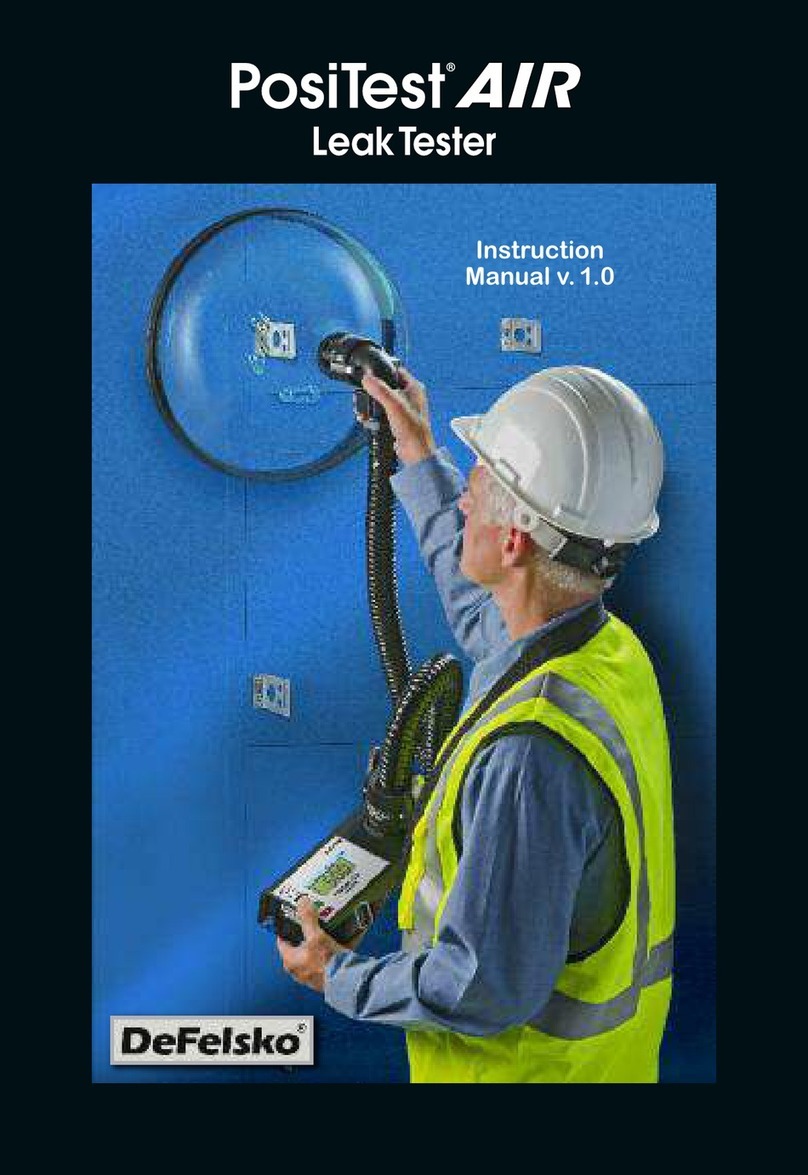
DeFelsko
DeFelsko PosiTest AIR User manual
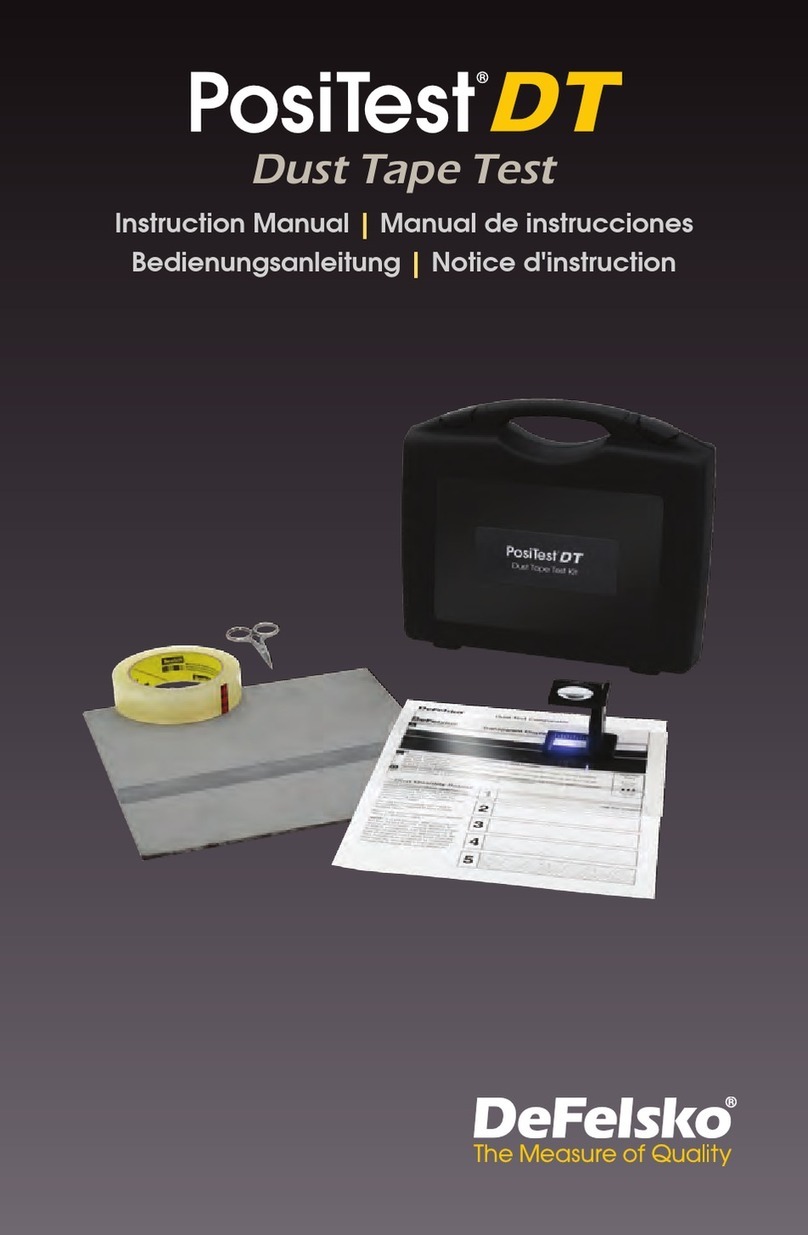
DeFelsko
DeFelsko PosiTest DT User manual

DeFelsko
DeFelsko PosiTest AT User manual
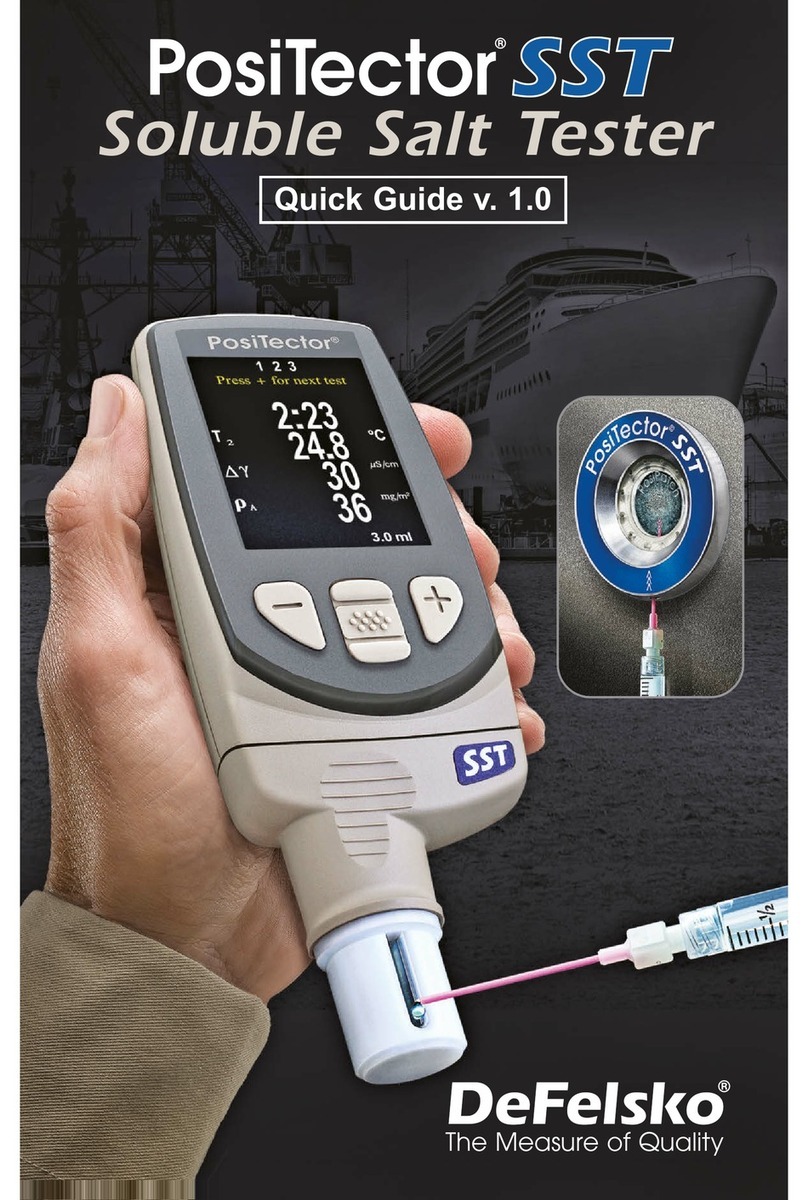
DeFelsko
DeFelsko PosiTector SST User manual

DeFelsko
DeFelsko PosiTector SPG User manual
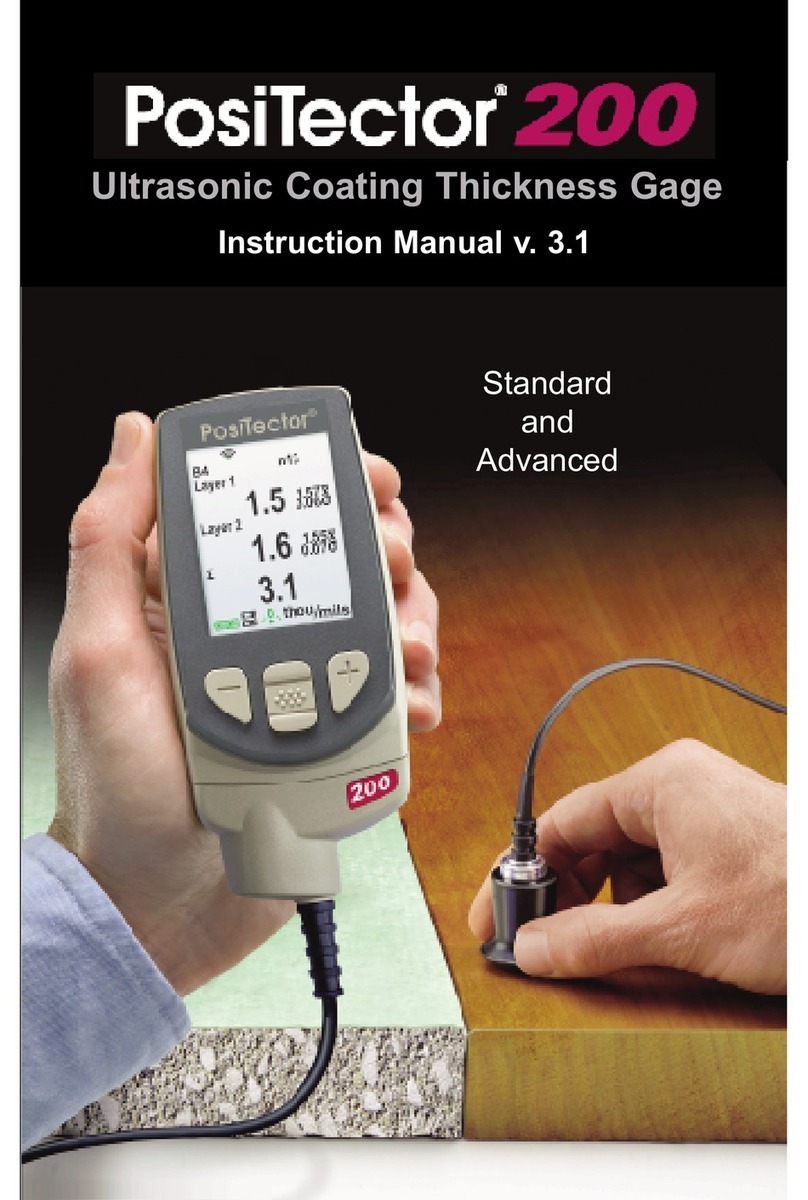
DeFelsko
DeFelsko PosiTector 200 User manual

DeFelsko
DeFelsko PosiTest AIR User manual
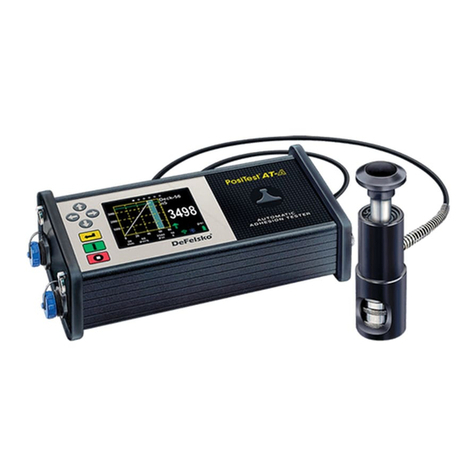
DeFelsko
DeFelsko PosiTest AT-A User manual

DeFelsko
DeFelsko PosiTest AT-A User manual
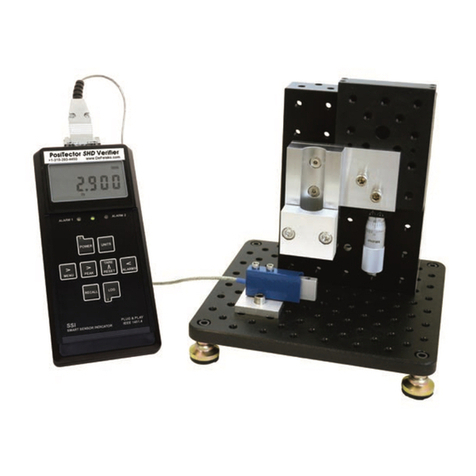
DeFelsko
DeFelsko PosiTector SHD Verifier User manual



